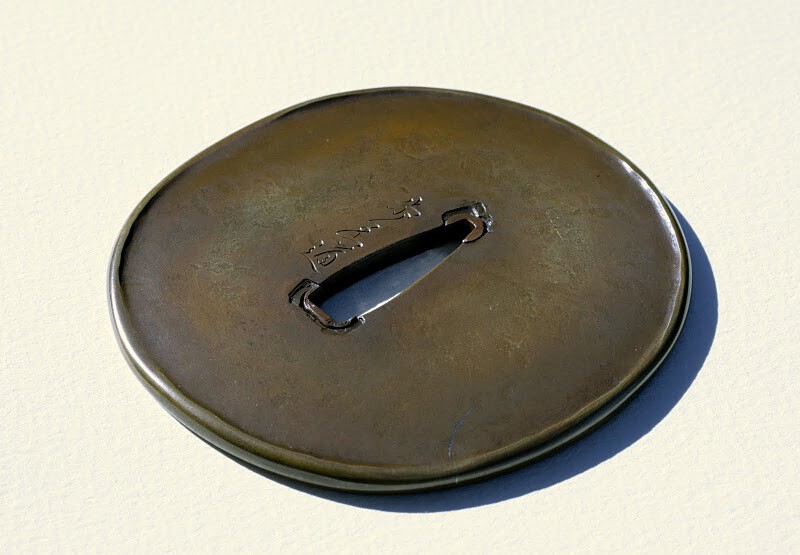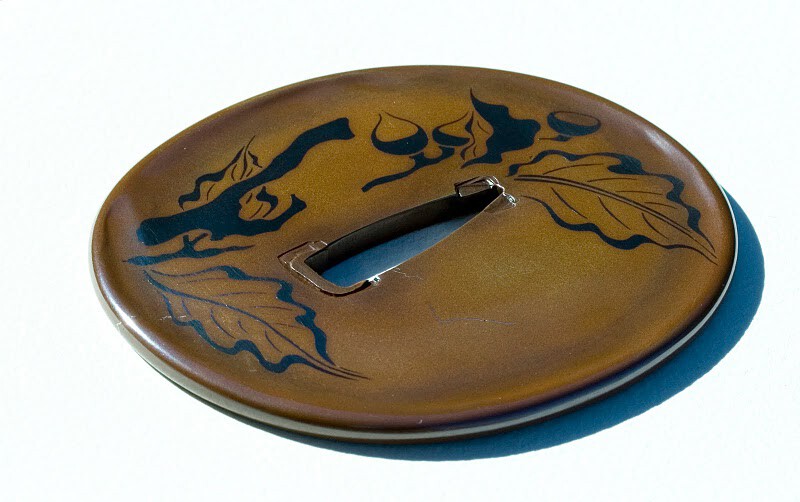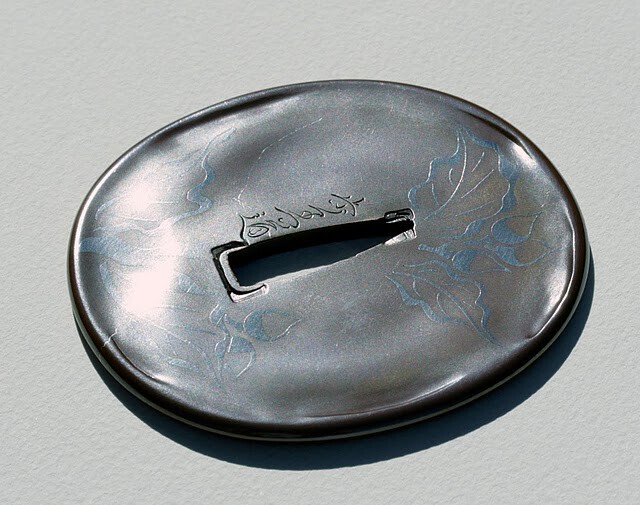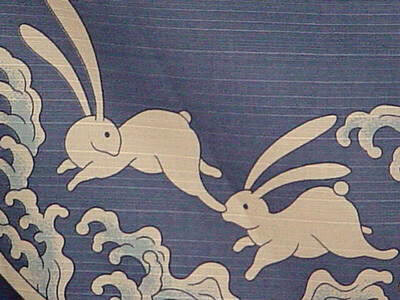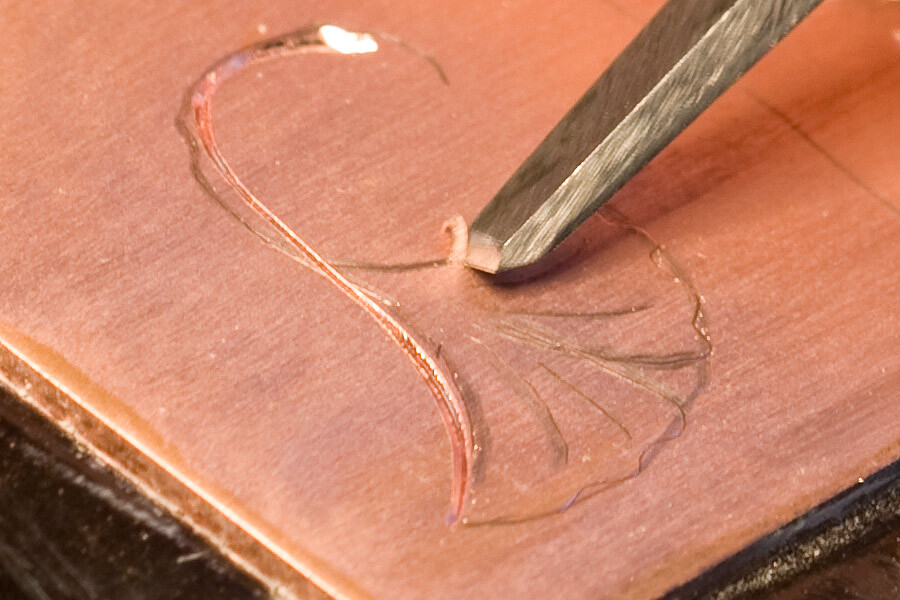-
Posts
3,091 -
Joined
-
Days Won
78
Content Type
Profiles
Forums
Events
Store
Downloads
Gallery
Everything posted by Ford Hallam
-
Thanks Marc Just to better illustrate the quality of Mitsuoki's kata-kiri here's an excellent example borrowed from the MFA site...for educational purposes. What Mitsuoki does that marks his work out as being something more than regular kata-kiri is he subtly begins to carve and model the focus points of his subject. Where most kata-kiri is a picture made up of chiselled lines representing brush strokes Mitsuoki Otsuki pushes his strokes to the point they are actually also carving the picture in a more sculptural way. In this example the Oni's nose is actually properly modelled and the robes, while cut with a kata-kiri chisel, are done so deeply, and vigorously, as to appear completely 3 dimensional. Personally, I judge him to be a true genius of the art form and for me, the most expressive exponent of kata-kiri.
-
cheers Dirk, thanks for looking for me, I appreciate the effort regards, ford
-
It's probably a long shot but I thought I'd ask anyway... I have a catalogue called "Drawing with tagane chisels"...that was put out by the, now defunct, Tosogu Museum in 1997. There's a shichu tsuba by Mitsuoki Otsuki illustrated in it which is, imo, one of the finest works of kata-kiri in existence...and I've seen a few Anyway, for my own nefarious reasons I'm looking for a bigger, better, clearer image of this masterpiece. Front and back. If anyone has such an image...I'd be most grateful to receive a copy. thanks for reading my request, regards, ford
-

Kanji for "Long Live the Soul of the Samurai"
Ford Hallam replied to nihonto1001's topic in Translation Assistance
If we accept the notion of the soul as being immortal wouldn't just seem a bit pointless to call for long life for it? Putting these two concepts; 'long life' and 'soul of the samurai' seems a bit incongruous. -
Hi John, there is only one tsuba with shakudo inlay :D ...that the front and the back. Perhaps the different lighting set ups created some confusion. Not sure what you mean but I don't use any files on my inlay work at all ...you may be thinking of another tsuba maker. If you follow these images here, on my forum, you'll see how I go about it. All true inlay is purely a mechanical setting. No heat is used at all. In any case, the shakudo has a higher melting point than the shinchu so that would melt away first. I assume you mean Hazama tsuba, in that case, where the sahari is melted into prepared cavities in a manner similar to champleve enamelling, the excess is most easily filed off and then polished level with stones.
-
Cheers Keith, thanks for the further compliments. Hi Lee, glad you're enjoying them :D ...perhaps I should bring out a line of tsuba shaped chocolate biscuits At the moment we're still trying to get some better images as I'm not really satisfied with these yet. Hopefully I'll have some new images prepared by the week-end. regards, ford
-
Hi Keith, thank you for the kind compliment Interesting question re; seki-gane...I was wondering if someone would question my use of them. As with all the parts that make up the finished works I use the saki-gane for their aesthetic value. I don't always add them but in this series I was consciously emulating an specific aesthetic. That they are ostensibly functional is of less importance to me, as an artist, than what they ( the seki-gane) bring to the overall expression. I alluded to this in the thread on contemporary tsuba. The function of tsuba is the same as that of any art-form; ie: artistic expression. I attempted to show that this has probably always been a significant (if not primary) part of the tradition and for me, today, the actual history of the tsuba itself becomes part of what inspires my own contemporary expressions in this tradition. In a nut shell; we tend to appreciate old, gnarly seki-gane in tsuba because they speak of age. I've simply used that vocabulary to express a part of my own aesthetic. I've treated the seki-gane in the same way I treated the choice of alloy, the way I treat the surface, the colouring...everything is considered as part of he whole effect. This is tsuba as art...in my opinion. A number of schools of the past finished their tsuba with sekigane in place. Those of the Suruga are so "designed" as to make it clear they were considered part of the overall look of the finished piece. The Tanaka school, however, must get the prize for really elaborating their pre-fitted seki-gane. It's probably a kantei point, as is the Suruga one. I've simply followed their lead but chosen a more subdued, wabi/sabi ( :? ) expression in the way I've applied mine. That rough and haphazard look is no accident Thanks for giving me a chance to elaborate, regards, ford
-
Thank you all very, very much, Gents, for your kind compliments A response like this is certainly a most welcome bit of icing on the cake after the long, solitary weeks spent wrestling with these works. Most appreciated. best regards, ford
-
For the last couple of months I've been working on a series of 3 tsuba that explore variations of texture and colour. I find the early Umetada work by Myoju and his son, Shigenari III, to be very appealing in this respect. As a way of gaining a more instinctive feeling of these qualities I've created my own interpretations of examples of theirs. If you're interested you can see the whole series here. This is the first one I made, it wasn't based on an existing work but was rather merely inspired by the overall aesthetic. This one is my expression of a well know Myoju piece, one of his most attractive in my opinion. I made a number of minor adjustments to the design as well as following my own instincts as regards the final colouring. ...and a view of the back shot in different lighting conditions. If you'd like to see some images of this tsuba being inlaid please follow this link to the Iron Brush forum. thanks for looking. regards, ford
-
Stephen, I think that perhaps the camera itself is probably ok. I'd suggest first using adequate lighting, shaded natural light is my choice, and keeping the camera completely still is essential. A tripod, even a little tabletop version, is a must. A remote control (or use the built in timer)is also very handy too, as it eliminates camera shake. regards, ford
-

Weapon Masters 2009
Ford Hallam replied to Toryu2020's topic in Sword Shows, Events, Community News and Legislation Issues
That water cutter test ( quite strangely I found the repeated English phrase in the commentary almost hypnotic ) is clear proof that the Kami in Nihonto are more powerful than those in water. ...and I really must get a water cutter, it'll make creating sukashi tsuba a piece of cake -
I know everyone on this board will absolutely love ...you'll not be able to resist :D In fact, it might make a perfect NMB theme song...especially for the annual "gathering of the clan" at DTI Greg Irvine at the V&A sent me the link btw.... Enjoy! ford
-
Keith, the motif of long eared rabbits and waves was, and is, actually a remarkably common design in Japan. Apparently the design originates from the No theatre. A courtier crossing Lake Biwa recites a poem that remarks on the moon reflected on the waves....and thereby the rabbits on the moon ( obvious really ) now appear to run on the waves. While I agree that it's a modern cast copy I believe it was made from a mould taken from a genuine tsuba. It doesn't look anything at all like Owari though...the way the waves are carved and the relative openness reminds me more of certain types of Ko-Shoami guards. regards, ford
-
Jean, ...you have a wife?!!! You smooth talking Frenchman you :D ....must be that accent hugs, ( the effect of a Sancerre-like Chenin Blanc. See how our wines are sort of yin/yang neighbours) ford
-
Cheers for the vote of confidence, George :D It looks quite 'modern' to me also. This sort of modernist stylisation, the angularity and symmetry, began around the 1920's and is indicative of the Mukei art movement. Here's a vase from 1942, by Takashi Osuga, that illustrates the style. ...and this piece by the same artist, circa 1930.
-
Hi Barry, thanks, I'm glad my little contributions help to stimulate a fresh look at times best regards, Ford
-
John. line engraving is correctly called kebori, I was merely trying provide some clarification on what you said here, not suggesting a change of terminology. Giri-bori is a quite distinct technique and is generally identified by little notches is the line and a a slightly raised edge to the line where the metal has been displaced as in example this Nobuie. I've uploaded some more exampleshere, in my picasa gallery, that are full resolution.
-
Hello David, it's hard to be certain but the photo of yours does seem to show a definite slant on the right hand side of the cut grooves. This may be indicative of the use of a kata-kiri chisel... The tsuba that started the thread is kebori, imo. and I very much doubt any inlay was ever in those lines. For what it's worth the mei of genuine first and second generation Nobuie are struck in giri-bori; that the same way swordsmiths do theirs. In addition, it appears to my eyes as though almost all the 'so called' ke-bori decoration on their tsuba is in fact also clearly giri-bori. that is to say no metal was removed, it was only displaced. I can upload some high res images of some pretty famous examples where you can easily see the characteristic "chatter marks" of the arrow head shaped punch....but I need to feed my family first.
-
Hi John, most mei on kinko work are cut kata-kiri, yes. Good thing none of it is easy...or everyone would be doing it. :D regards, ford
-
Hi John, yes, in effect that exactly what any such line is, ie; kebori Kata-kiri bori is carried out by means of a flat chisel. Only the corners are used though and the varying width of the cut is created by leaning the chisel over. This images shows cutting kata-kiri style. Kata-kiri chisel above and kebori chisel below. sorry for the confusion. ford
-
Hello John, sorry to disagree with you but kebori doesn't, literally, mean ‘hair-line carving’. The kanji that denotes the 'ke" is also read 'te' and means hand ( Just like in 'kara-te'). Bori, or hori, means carve. So the term really only means hand carved, literally. I'd suggest it's a fairly basic term in this traditions metalworking vocabulary and is used to describe any line that is cut by means of a 'V' shaped chisel. There is no implication that the lines be absolutely regular either. The application could be further described as kiri-bori; the use of the word kiri emphasises the fact that metal is actually cut and removed, also to distinguish it from giri-bori' This is a related process (giri-bori) where the word giri means kick. In this technique the metal is not removed but only displaced by means of a wedge shaped punch. It is this technique that swordsmiths use in signing their mei on nakago. The word for both punches and chisels in the metalworking tradition of Japan is tagane. We make the distinction by prefixing the word with either kiri (to cut) for chisels and giri (to kick) for punches. Hope this help to clarify things a little. regards, ford
-

by any other name
Ford Hallam replied to John A Stuart's topic in General Nihonto Related Discussion
Here's another one for you, John Akitsushima; The Island of the Dragonfly. An ancient Japanese name for dragonfly is akitsu. According to legend the first emperor, Jinmu, was once bitten by a mosquito which was then promptly eaten by a passing dragonfly. This apparently led to the land being known as Akitsushima; The Island of the Dragonfly. -
Barry, I believe Steve and I am on very good terms, our entente is very cordiale :D I, for one, even exude bonhomie If our conversation yields anything that may be of interest, or use, to our members I'm sure we'll tell you all about it :D Right now though, I think we both need a break before we strain out heads again... cheers, ford
-
Hi George, I think the matter of how non-Japanese working in classical Japanese fields sign their work is always going to be a tricky one. Ultimately it must be for the individual and their teacher to decide. In my case, I was advised by my teacher and his colleagues. Adopting a Japanese Go simply seemed too affected for me... I have never felt like I needed that sort of label to validate what I'm about. I'm not suggesting others who do take that option feel that way...only that that was how it would have felt had I gone for a traditional metalworkers mei. We simply decided I should sign with the sound of my name. My teacher (Izumi Koshiro Sensei) selected 3 suitable kanji that phonetically read Fo-O-Do and have the auspicious meaning; "walking in the kingly/heavenly road" The tsuba I made prior to my first trip to Japan, in 1993, are all signed with a simple monogram that comprises my initials but looks vaguely like a kanji...sort of :? regards, Ford
-
Hi Mark, submitted work is always signed. Apparently the pieces in NBTHK competitions were judged twice. Once with the mei covered and once with the mei revealed....your guess is to why is as good as mine ...and who told you I wasn't Japanese?!!! Hi Steven, no worries...I take your point though...we'll keep an close eye on the rowdy elements




